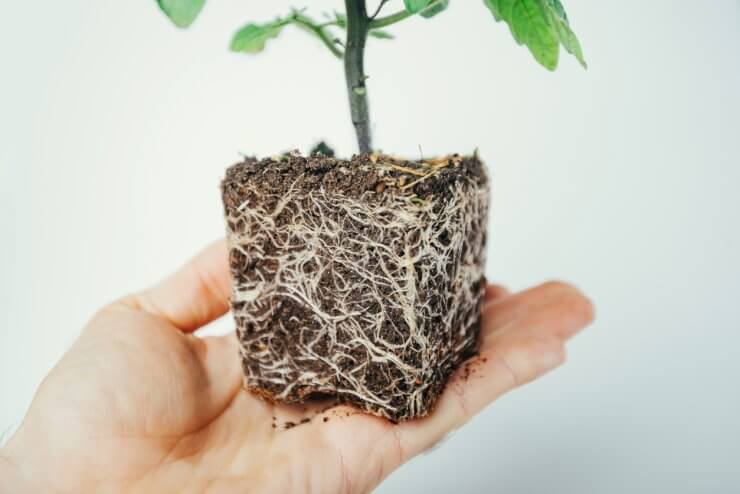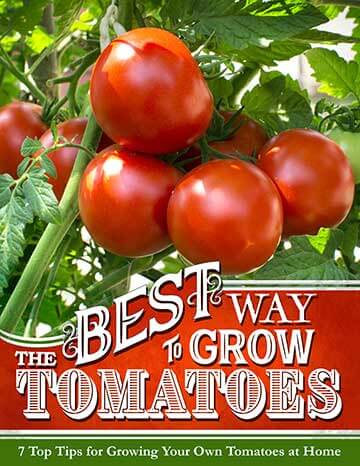
There are some opinions out there about what to do with root-bound tomato plants. Quite a few people seem to believe that the best thing is to just dump them in the compost pile. Other people don’t see any problem with root-bound tomato plants as long as you care for them.
I look at it this way. If I’ve got room, I might as well work with every tomato plant I can. Even if one or two don’t grow or produce well, it’s no loss, really. But if I don’t have space and have to make a choice between two tomatoes, I’m going with the healthiest one. What I won’t do is toss a tomato (or any other plant) into the compost heap just because I don’t “think” it will produce.
That said, is there any merit to the idea of getting rid of root-bound tomato plants? At some point, the roots may get so dense and bound up that the plant won’t be able to absorb water or nutrients and may die. But up until that point, you could have a chance to save it. Here’s what to do.
Discover 7 top tips for growing, harvesting, and enjoying tomatoes from your home garden—when you access the FREE guide The Best Way to Grow Tomatoes, right now!
Recognizing and saving your root-bound tomato plants
The first question, of course, is how do we recognize root-bound tomato plants? Most of the problems you’ll find are from a lack of nutrition. Tomato roots can spread fairly wide, but in a pot, they usually don’t have the room they need to grow, so they begin growing in circles.
When the root system gets too thick, there simply isn’t room for water and nutrients to flow through. Think of it like traffic. Drive across West Texas at night, and it’ll likely be smooth sailing. But if you want to drive from Washington, D.C. to Baltimore at 4 p.m. on a Friday afternoon, well, good luck with that.
That’s similar to what’s going on with the tomato’s root system. Everything is fine when there’s room to spread out, but pack all those roots into a tiny container, and it’s just a mess.
So what does that actually look like? The first thing to consider here is timing.
For many gardeners, especially in cooler climates, the tomato growing season begins indoors. As our seeds germinate and little seedlings start to grow, the roots also grow. If they grow too much before you can transplant them outdoors, it’s possible for the young plants to get root bound in whatever container they’re in.
The other timing factor is later in the season, especially for potted tomato plants. Those roots have been growing for months, and that 5-gallon terra cotta pot isn’t big enough.
The Michigan State University Extension points out that root-bound tomato plants can wilt and dry out. They can also get blossom end rot because the vascular system of the plant can’t transport the nutrients the fruit needs to thrive.
That’s all fine and good, but what will we do with our root-bound tomato plants? How are we going to save them?
For seedlings and younger tomato plants, it’s a pretty easy fix. Just remove them from their container, tease out the roots, and transplant them into a larger container (or right into the garden if they’re ready and you already hardened them off).
It’s a bit more complicated for larger plants. I don’t know if you’ve ever tried to repot a 6-foot-tall tomato plant, but it will take some work. Honestly, if you’re at the end of your season, it might not be worth the effort and the potential of ruining any tomatoes on the vine.
If, however, you have a greenhouse or are in a warmer climate, grab one or two of your most patient gardening friends. Gather all your supplies, such as fresh soil, a larger container, a small trowel, and anything else you may need.
VERY carefully tilt the plant on its side with someone holding the vine, so it doesn’t break. Then gently pry the plant from the container and massage the root ball and soil to loosen things up. This could take a while, and you will likely break more than a few roots.
Add some fresh potting mix to your new container, place the tomato plant into the container, then top it off with more potting mix.
Water the plant, but don’t fertilize it right away. Plants aren’t especially fond of getting moved around, so you don’t want to overdo things and shock the system too much.
With a bit of luck, our formerly root-bound tomato plants will start looking better in a week or so, and we will get some delicious tomatoes.
Have you had to repot root-bound tomato plants? How did it work out?
If you need some supplies for your tomatoes, here are some items you might find helpful.
Note: Food Gardening Network contains links to affiliate websites, including Amazon and Rakuten Affiliate Network, and we may receive a commission for any eligible purchases made by you through links on this page. Any reviews are based on honest reviews of the products.
Discover 7 top tips for growing, harvesting, and enjoying tomatoes from your home garden—when you access the FREE guide The Best Way to Grow Tomatoes, right now!




